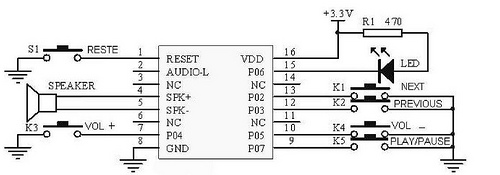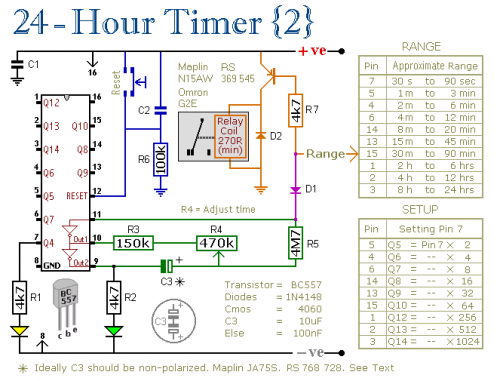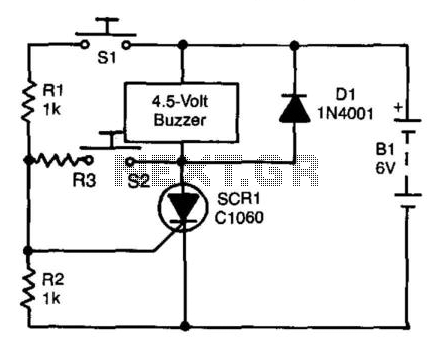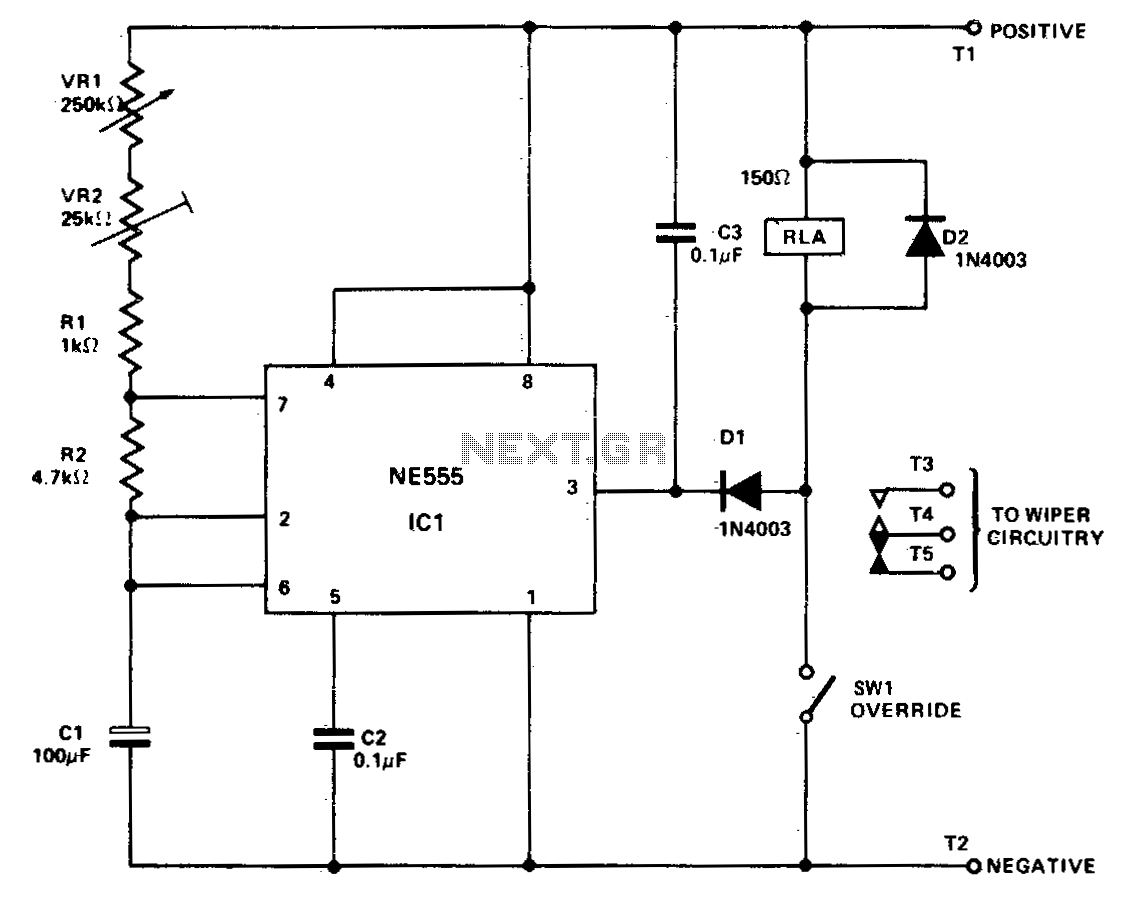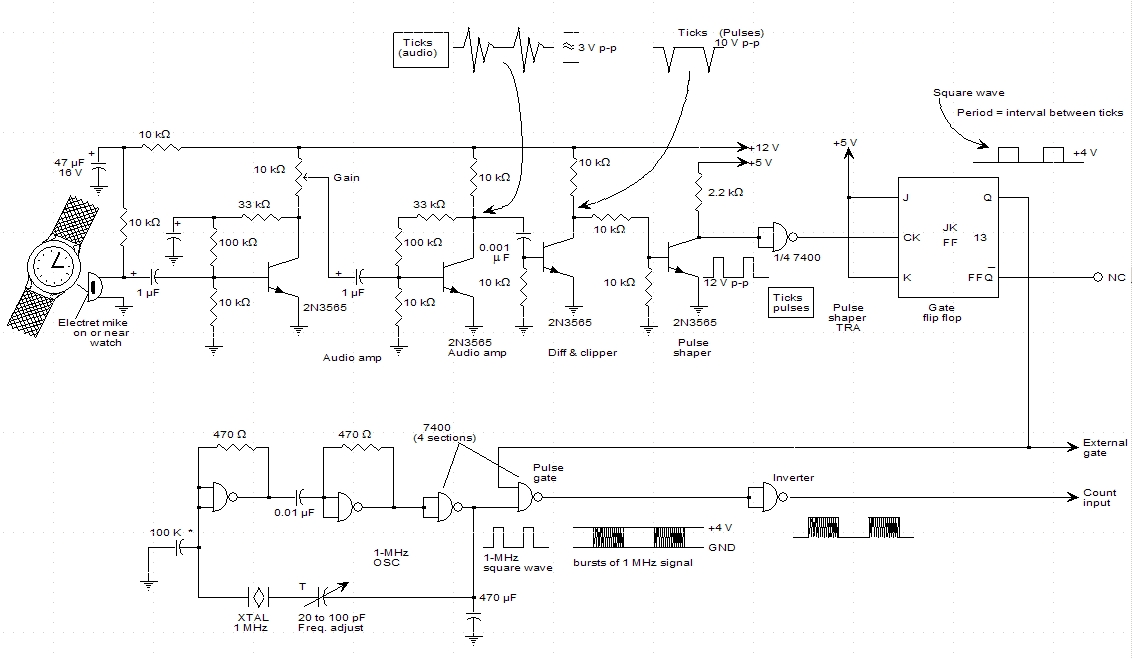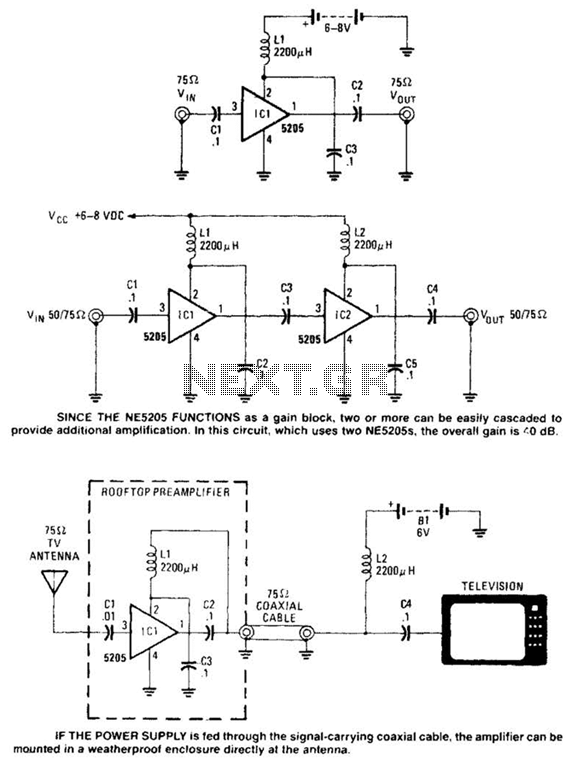
LM555 Timer Delay Signal Clock Circuit
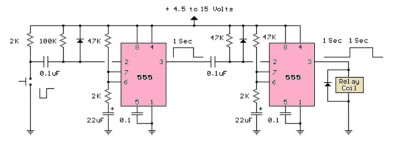
The LM555 timer circuit is similar to the previous design but incorporates two stages, allowing for control over both the pulse width and the delay.
The LM555 timer is a versatile integrated circuit widely used in various timer, delay, pulse generation, and oscillator applications. In this specific configuration, the circuit utilizes two stages to enhance its functionality. The first stage is responsible for generating a precise pulse width, while the second stage manages the delay period between pulses.
The circuit is typically configured in astable or monostable mode, depending on the desired output behavior. In astable mode, the LM555 continuously oscillates between high and low states, generating a square wave output. This configuration is ideal for applications such as clock pulses, LED flashers, or tone generation.
In monostable mode, the LM555 produces a single pulse of a specified duration in response to a trigger input. This mode is useful for applications requiring a timed response, such as timer circuits or event counters.
Key components in the circuit include resistors and capacitors that determine the timing characteristics. The pulse width is primarily influenced by the values of the resistors and the capacitor connected to the discharge and threshold pins of the LM555. Similarly, the delay period can be adjusted by modifying the component values in the feedback loop.
Overall, the dual-stage design of this LM555 timer circuit enhances its versatility, allowing for precise control over both pulse width and delay, making it suitable for a wide range of electronic applications.LM555 timer circuit is similar to the one above but employs two stages so that both the pulse width and delay can be controlled 🔗 External reference
The LM555 timer is a versatile integrated circuit widely used in various timer, delay, pulse generation, and oscillator applications. In this specific configuration, the circuit utilizes two stages to enhance its functionality. The first stage is responsible for generating a precise pulse width, while the second stage manages the delay period between pulses.
The circuit is typically configured in astable or monostable mode, depending on the desired output behavior. In astable mode, the LM555 continuously oscillates between high and low states, generating a square wave output. This configuration is ideal for applications such as clock pulses, LED flashers, or tone generation.
In monostable mode, the LM555 produces a single pulse of a specified duration in response to a trigger input. This mode is useful for applications requiring a timed response, such as timer circuits or event counters.
Key components in the circuit include resistors and capacitors that determine the timing characteristics. The pulse width is primarily influenced by the values of the resistors and the capacitor connected to the discharge and threshold pins of the LM555. Similarly, the delay period can be adjusted by modifying the component values in the feedback loop.
Overall, the dual-stage design of this LM555 timer circuit enhances its versatility, allowing for precise control over both pulse width and delay, making it suitable for a wide range of electronic applications.LM555 timer circuit is similar to the one above but employs two stages so that both the pulse width and delay can be controlled 🔗 External reference
Warning: include(partials/cookie-banner.php): Failed to open stream: Permission denied in /var/www/html/nextgr/view-circuit.php on line 713
Warning: include(): Failed opening 'partials/cookie-banner.php' for inclusion (include_path='.:/usr/share/php') in /var/www/html/nextgr/view-circuit.php on line 713
